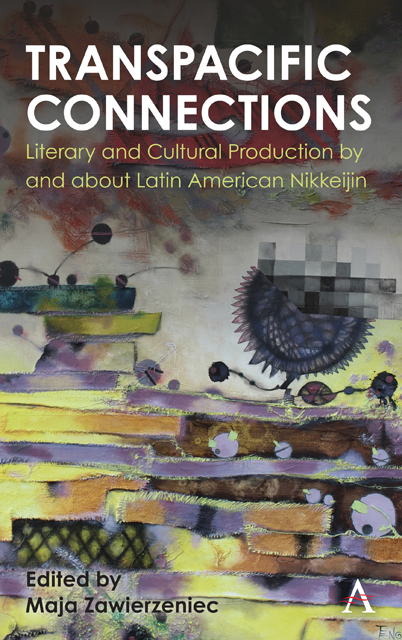Book contents
- Frontmatter
- Contents
- Notes on Contributors
- Introduction
- Chapter 1 The “Japanese Community” in Brazil and its Literary Production: The Functioning of “Death” in Matsui Tarô’s Literary Fiction
- Chapter 2 Contested Modernities: Representations of the Brazilian Dekasegi and the Nipponization of Brazil in Nikkei Cultural Production
- Chapter 3 When Gustave Flaubert Meets Ryūnosuke Akutagawa: “Corazón Sencillo” by Augusto Higa Oshiro. The Short Story of a Peruvian Nikkei Writer
- Chapter 4 Japanese Prints in Tablada’s Writings: Cultural and Media Transposition in ‘El poema de Okusai’
- Chapter 5 The Telenovela Oyuki’s Sin (El Pecado De Oyuki): Las Realidades Del Otro or Mexico through A Japanized Lens
- Index
Introduction
Published online by Cambridge University Press: 09 December 2022
- Frontmatter
- Contents
- Notes on Contributors
- Introduction
- Chapter 1 The “Japanese Community” in Brazil and its Literary Production: The Functioning of “Death” in Matsui Tarô’s Literary Fiction
- Chapter 2 Contested Modernities: Representations of the Brazilian Dekasegi and the Nipponization of Brazil in Nikkei Cultural Production
- Chapter 3 When Gustave Flaubert Meets Ryūnosuke Akutagawa: “Corazón Sencillo” by Augusto Higa Oshiro. The Short Story of a Peruvian Nikkei Writer
- Chapter 4 Japanese Prints in Tablada’s Writings: Cultural and Media Transposition in ‘El poema de Okusai’
- Chapter 5 The Telenovela Oyuki’s Sin (El Pecado De Oyuki): Las Realidades Del Otro or Mexico through A Japanized Lens
- Index
Summary
¿Cómo se acuerda con los pájaros
La traducción de sus idiomas?
—Pablo NerudaThe topic of the culturally and ethnically complex Latin American identity has always been of utmost importance in the field known as Latin American studies: in historical, social, and literary works. Moreover, a vast body of psychological research indicates that analyzing and understanding the experiences of individuals representing multiple cultural backgrounds are vital to analyzing and understanding the communities and societies they belong to. Studying life narratives of individuals and communities, whether in purely historical or literary context, enriches and enhances the understanding of pluricultural nations: the otherwise “compartmentalized” experiences or “unstable identities” get “woven” into the big picture of a given world region or nation. Moreover, analyzing the fusion of different ethnicities that gives rise to new cultural phenomena, new values, and new social quality expands the more traditional view of Latin American studies.
Furthermore, the cultural, social, and political relations between Latin America and Asia are a tricky and complex topic. If you google “Asia and Latin America,” you get almost 6 billion results. They address various issues related, among others, to business relations (strategic partnerships vs. competition, Latin American investments in Asia and vice versa and its social and political implications, like the growing importance of Asian-Latin American relations on the global level) and cultural and literary relations (connected to migration and cultural exchange), both from the historical point of view and in the context of shaping future relationships.
The Asian immigration to the Americas dates to the sixteenth century. The Asians participated in the Galeón de Manila trade with Spain and Portugal in the 1500s, and over the next centuries thousands of people from different Asian countries left their homes to find new life opportunities across the ocean and constituted an important labor force in the region. Nevertheless, commonly, and despite the historical and contemporary presence of the Asian communities, the multiculturalism and Latin American miscegenation have been mostly defined as the “mixture” and “cohabitation” of the European, autochthonous, and African substratum, frequently leaving aside the “Asian element,” either marginalizing it or treating it as a mere “curiosity.”
- Type
- Chapter
- Information
- Transpacific ConnectionsLiterary and Cultural Production by and about Latin American Nikkeijin, pp. 1 - 8Publisher: Anthem PressPrint publication year: 2022



